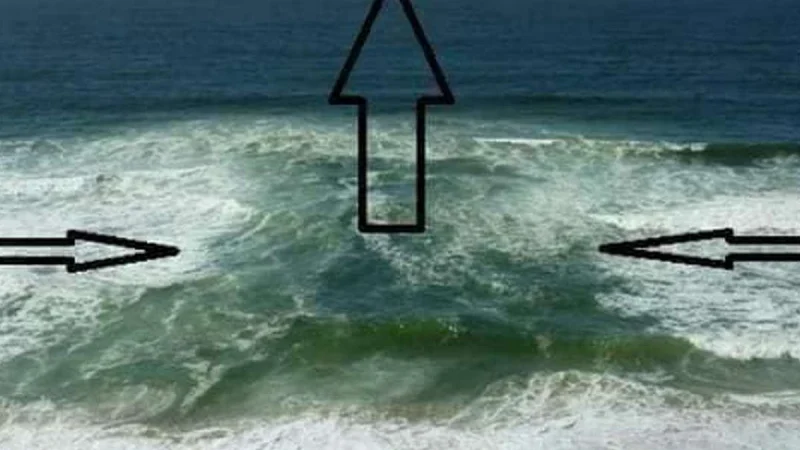Ground-swel can be known when a person enters the water up to his knees and feels that the sand is disappearing under his feet and the sea begins to “pull” him
As autumn winds begin to blow and dangerous dead swell and undertow appear more and more often. In the early hours of the day the sea may seem calm, but it is not always safe.
Ground-swel can be known when a person enters the water up to his knees and feels that the sand is disappearing under his feet and the sea begins to “pull” him.
If you find yourself in such a phenomenon, you should not panic, but turn on your back, because the human body has buoyancy, and this is the easiest way to detach yourself from the “paws” of the sea.
If you see an empty and quiet space between the waves /as in the pictures/, do not allow yourself to enter the water. The space between the two arrows is actually ground-swel. This is a very strong current that will not allow you to return to the shore, but will drag you far out to sea.
You should also be aware that ground-swel does not drag to the bottom. Inward – yes, but not downward. It is not a whirlpool and only the surface layer of water moves at high speed. It is not wide. It does not exceed 50 m, most often it is 10-20 m. By swimming 20-30 m to the side, you will get out of it. It is not long and does not drag kilometers inland. It quickly weakens where the crests of the waves begin to break. This place is a maximum of 100 m from the coast. If you can’t swim, don’t go swimming where there are no waves and the sea is calmest. The dead excitement is right there.
To get out of it, you don’t have to resist, but follow a simple rule that can help you get out of the embrace of the water and set foot on dry land again. You don’t have to panic and fight ground-swel. It “works” about 100 meters from the shore – that’s the distance it can usually take you.
The dead current is perpendicular to the coastline. Once you feel its strength diminishing, start swimming parallel to the shore. The moment you can do it and the water isn’t pushing you back, head straight for the beach using the waves for help.









